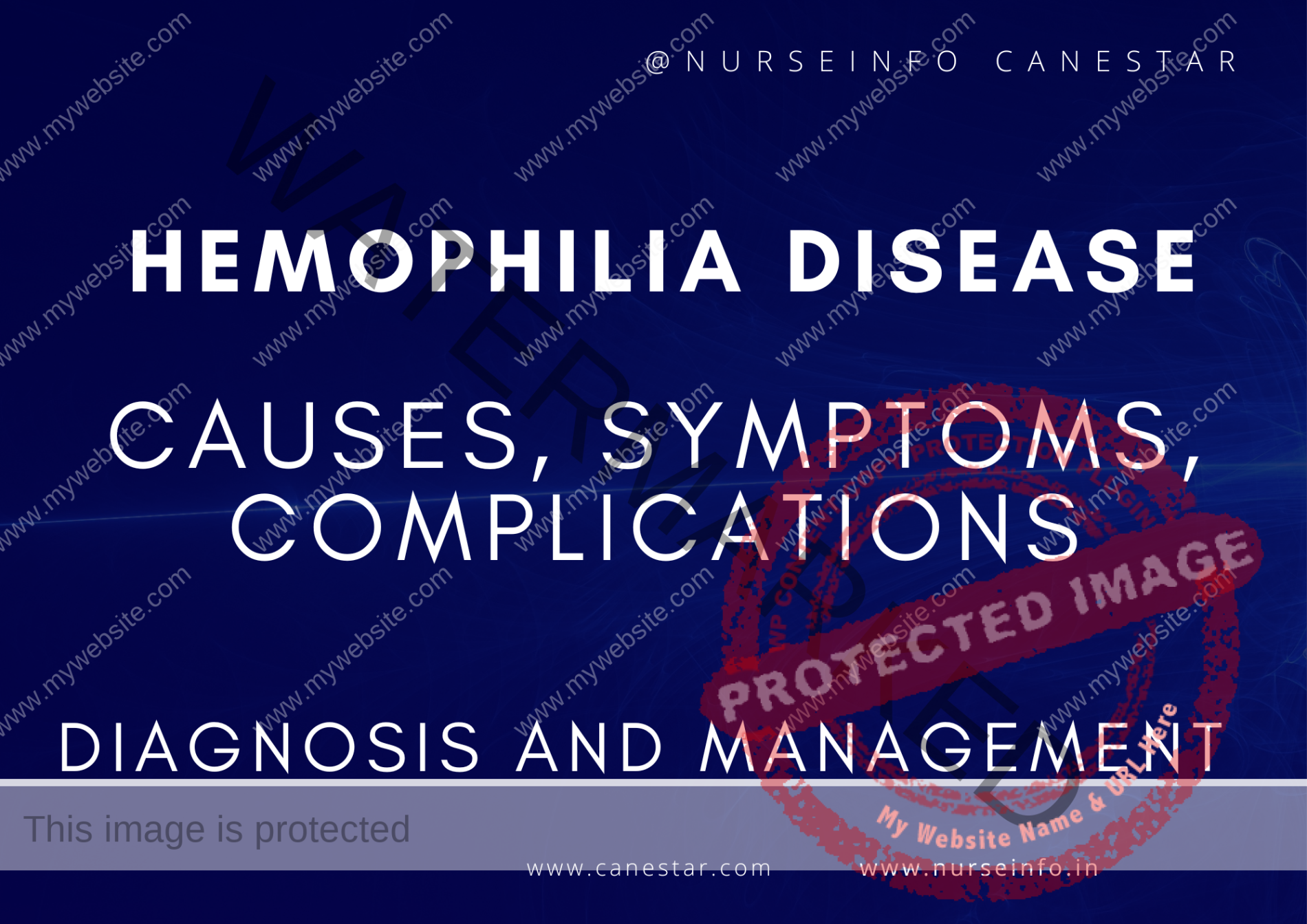Hemophilia Disease – Overview, Causes, Symptoms, Complications, Management
Hemophilia Disease
Overview
- Hemophilia is a genetic disorder that impairs the blood’s ability to clot.
- Predominantly affects males due to its X-linked recessive inheritance pattern.
- Two main types: Hemophilia A (deficiency of factor VIII) and Hemophilia B (deficiency of factor IX).
Symptoms
- Frequent and prolonged bleeding: Even from minor injuries.
- Spontaneous bleeding: Without apparent cause.
- Joint bleeds: Leading to pain, swelling, and potential joint damage.
- Muscle hemorrhages: Painful and may cause swelling.
- Nosebleeds and bleeding gums.
- Hematuria: Blood in urine.
- Intracranial hemorrhage: Severe cases can lead to life-threatening brain bleeds.
Diagnosis
- Family History: Important for identifying risk.
- Blood Tests:
- Clotting Factor Tests: Measure the levels of factor VIII or IX.
- Activated Partial Thromboplastin Time (aPTT): Typically prolonged in hemophilia.
- Genetic Testing: Identifies specific mutations in the F8 or F9 gene.
Treatment
- Replacement Therapy: Infusions of clotting factors.
- Factor VIII for Hemophilia A.
- Factor IX for Hemophilia B.
- Desmopressin (DDAVP): Synthetic hormone used in mild Hemophilia A to stimulate the release of stored factor VIII.
- Antifibrinolytic Agents: Help prevent clots from breaking down.
- Gene Therapy: Emerging treatment aimed at correcting the underlying genetic defect.
- Preventive (Prophylactic) Treatment: Regular infusions to prevent bleeding episodes.
Management
- Avoidance of Certain Medications: Such as aspirin and NSAIDs, which can exacerbate bleeding.
- Exercise and Physical Therapy: To strengthen muscles and protect joints.
- Careful Monitoring: Regular check-ups with a hematologist.
- Emergency Preparedness: Medical alert identification and knowledge of the nearest hemophilia treatment center.
Complications
- Joint Damage: Due to recurrent bleeds.
- Development of Inhibitors: Antibodies that attack infused clotting factors.
- Infections: From blood product transfusions (reduced with modern treatments).
- Adverse Reactions: Allergic responses to treatment.
Living with Hemophilia
- Education and Advocacy: Understanding the condition and knowing one’s treatment plan.
- Support Networks: Connecting with others through hemophilia organizations and groups.
- Lifestyle Adjustments: Being mindful of activities to avoid injury.






